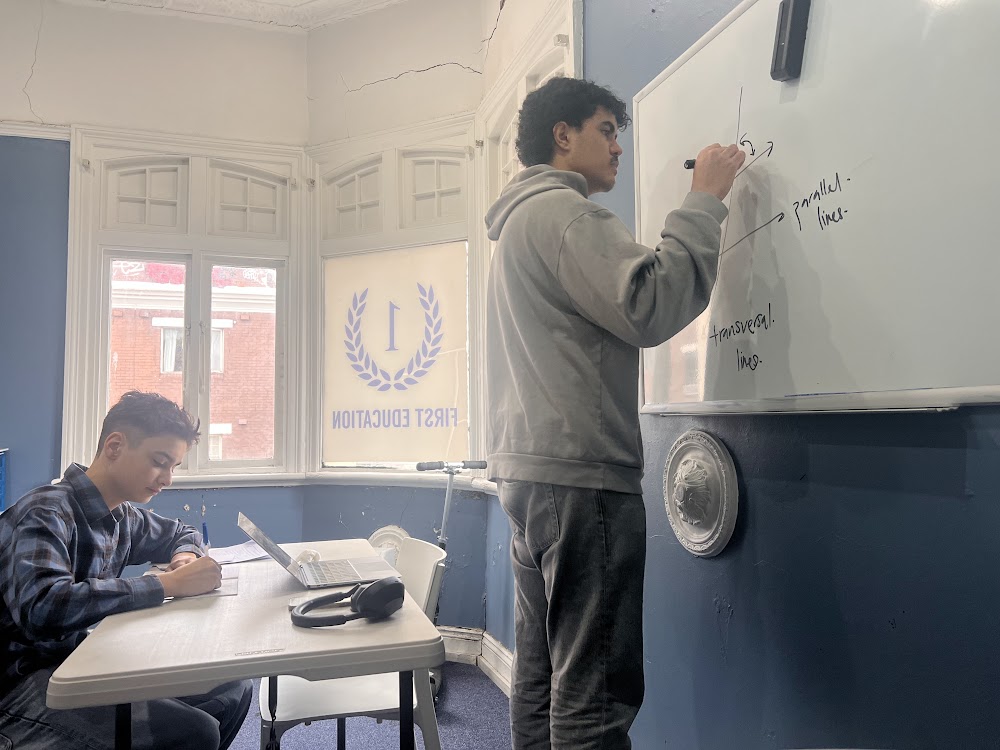
Today, I observed Toby teaching Mattia a Year 9 Maths lesson on angles, parallel lines and perpendicular lines. It’s one of those topics that can feel confusing until it’s broken down properly, and Toby did a great job of making it click.
Instead of just focusing on definitions, Toby started with real-life examples. He compared parallel lines to two roads that never meet, and perpendicular lines to intersections or crosswalks. This approach helped Mattia connect the ideas to things he actually sees every day, which made understanding them a bit more natural. For students, having that context can really make a difference, especially with concepts that can feel abstract. He was great at keeping Mattia engaged and on topic.
One thing Toby did really well was helping Mattia visualise different angles. They went through examples on the whiteboard, and Toby had Mattia create his own versions to test his understanding. They explored different types of angle pairs – co-interior, corresponding, alternate etc – and practiced identifying and measuring them in different ways. Gradually, Mattia got more comfortable identifying and calculating angles without needing much prompting.
It was great to see Mattia start to feel more confident as they worked through each example. Topics like angles and lines can be tough to grasp at first, but with enough practice and the right explanations, they start to make sense. Seeing students build these foundations is one of the best parts of tutoring. These skills not only help them in school but also improve problem-solving and logical thinking in the long run. It’s rewarding to watch students develop these skills and see that moment when everything clicks into place.
Allegra Pezzullo

